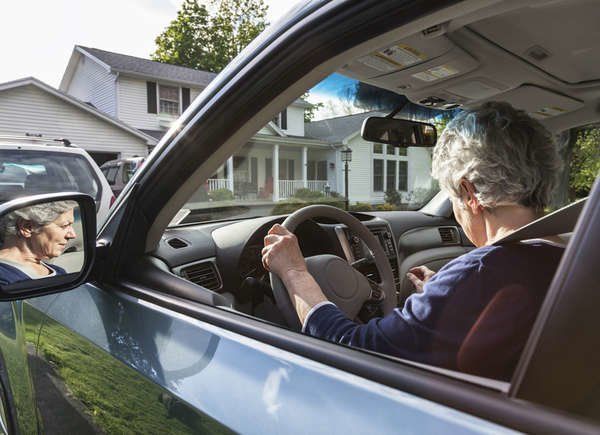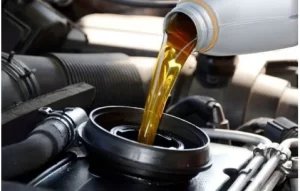
What is Vehicle and Car Recycling?
As of the first quarter 2019, there were 276 million vehicles on the roads in the United States. Each year, 17 million cars are added to the system fleet. The rest of the vehicles continue to age. It’s a never-ending cycle.
We all love our cars when they are new and clean. But, that lustre eventually fades and eventually your car will be obsolete. Your vehicle has reached the end of its usefulness when it is unsafe to drive and can’t be fixed.
Vehicles are usually large metal pieces. You’d be worried that your prized possession could end up in a junkyard, causing environmental damage and providing shelter for a flock of field mice. While this may be a good thing for the mice, it doesn’t make the environment any better.
This was how it was in the 1960s, when the world didn’t know much about ecology or environmental care. It has not been discussed how to make money from the 8 million junk cars piled up in junk yards all across the country. The Highway Beautification Act of 1965 created the framework for modern automobile recycling. It was the act that eradicated the huge roadside junk yards that clogged America’s freeways. In 1970, the first Earth Day introduced environmental consciousness to the public.
In recent years, automobile recycling has gained popularity with many companies promising to recycle their vehicles responsibly. It does this by salvaging functional parts, recycling scrap material and efficiently and reliably disposing off useless components.
An Introduction to the Automobile Recycling Industry
Automobile recycling is now the 16th largest industry in America, employing 140,000 people and earning $32 billion annually. The auto recycling industry could also boast that it is the largest recycler of automobiles, processing nearly all cars nearing the end of their useful lives. Vehicles can be recycled at a much higher rate than paper or aluminium cans. Think about how much you will save if you have all these recycling bins at your curb on trash day.
Vehicle Recycling’s Importance
End-of-life automobiles are dangerous. These automobiles are unsafe because they cannot be repaired correctly and pose a danger to their safety. It is better to sell it before it causes damage and increases accidents.
The vehicle recycling industry provides vital services, in addition to security. The industry provides a wide range of services to the community, including disassembling, repairing and recycling millions upon millions of vehicles that are no more functional.
Deconstruction
This is the next step and involves the removal of the car’s useful parts for reselling. These components are often worth more than their salvage value and can be reused, without the need to melt down or remade for new cars. These pieces can be recycled and sold to people looking for affordable equipment to maintain their vehicles or repair the structural damage caused by a crash. A resold vehicle can yield many usable parts, including:
Devastation
We are now in the third phase. The majority of the value remaining would come from the salvage value found in the materials. The majority of this cost would be attributed to steel and aluminium in the chassis and body shapes, as well as inoperative mechanical parts.
The shell remains to be sent to shredding facilities, where it will often be flattened or broken to conserve space. The shell would then be fed to a huge crushing machine that shreds it into smaller metal pieces about the same size as your first.
Resource Recovery
This is the final step, in which mixed metal chunks are prepared using magnetic separation, eddycurrent, laser and even infrared system. These machines can also differentiate ferrous metals (iron, steel) and non-ferrous metals like aluminum and copper, as well as remove any remaining plastics and fabrics. Auto Shredder Residue (or ASR) is a largely inorganic substance. It is also known as “auto fluff” within the industry.
It is a wonderful procedure that seeks to salvage as much from an end-of life vehicle as possible, which is both beneficial to the environment and the automotive recycling industry.
Metal is recovered from shredding operations and used in manufacturing as raw material. The metal is used to make products in steel mills, electricarc furnaces, and other melting plants. Recycled steel is responsible for approximately half of the new steel made in North America today.
What parts are not recyclable in the car?
While a lot of automobiles can be reused or recycled in some way, only one byproduct is currently being fully integrated into recycling. ASR stands for Automotive Shredder Residue. It is responsible for between 15% and 20% of the total car weight.
ASR is left after all the value of a remanufactured car has been removed using existing technologies. ASR is small particles of non-ferrous and ferrous metals, fabric and glass, as well as plastics, fluids and wood. ASR can contain toxic metals, compounds, such as lead, zinc, and cadmium. ASR is classified as hazardous trash in certain areas. This means that it requires special treatment and limits the ability of recyclers. Half of all ASR goes to landfills.
To reduce ASR and make cars less dangerous for the environment, the automotive industry has joined forces with recyclers. Present recycling activities have saved 9,000 pounds of mercury from the atmosphere. The business is also working to remove any remaining mercury in our vehicles.
What Vehicle Components Can Be Reused?
Add all the reusable parts of a vehicle, both metal and non-metal together, you get at least 25,000,000 tons of recycled content per year just from used cars. This is trash and hazardous chemicals that would otherwise pollute the ecosystem. It’s easy to say goodbye to old wheels when you realize that most of it can be used for new products and not thrown away in a landfill.
Recycled metal from your vehicle can be used to make the most unusual of new products. It is found in domestic batteries, which power everything from flashlights and cameras to cordless mice for surfing the internet. It can be recycled to make new cars and used in construction. You might end up with a car that is a part of the new vehicle you buy tomorrow.
There are many parts that can be reused from a vehicle, not just the metal ones. Around 86% of total vehicle components can be recycled. You can reuse any carpet remnants for engine fan parts and air filter assemblies. If the wheels are in good shape, they can be recycled and used to make new floor mats and braking paddles. Every part of an old car can be reused rather than thrown away.
Comprehensive vehicle recycling businesses will accept your entire vehicle and safely take it apart. They can reuse or recycle almost everything. If you prefer to do it yourself, This is a step-by -step guide on how to reuse your car parts one-by-one.






















